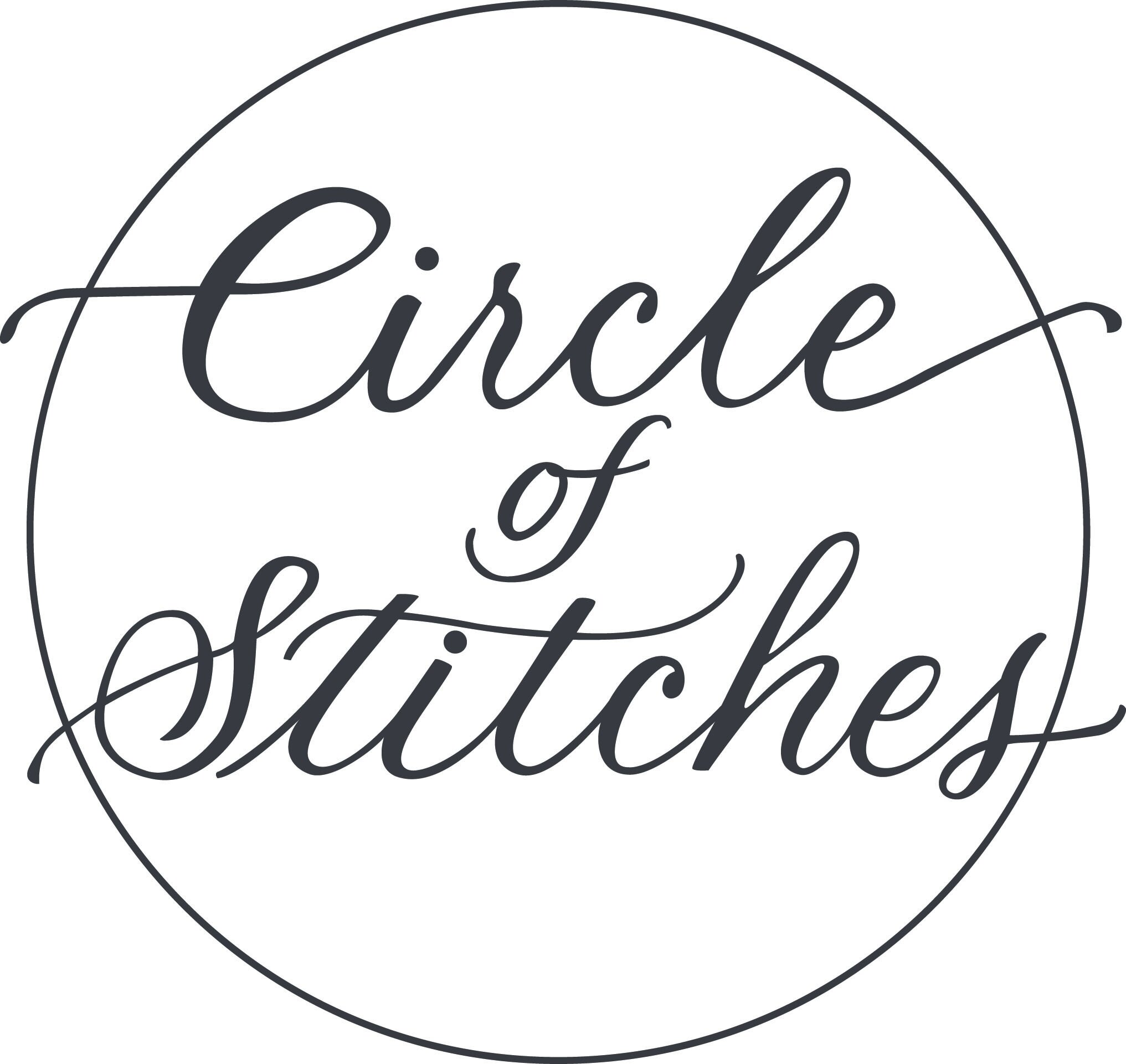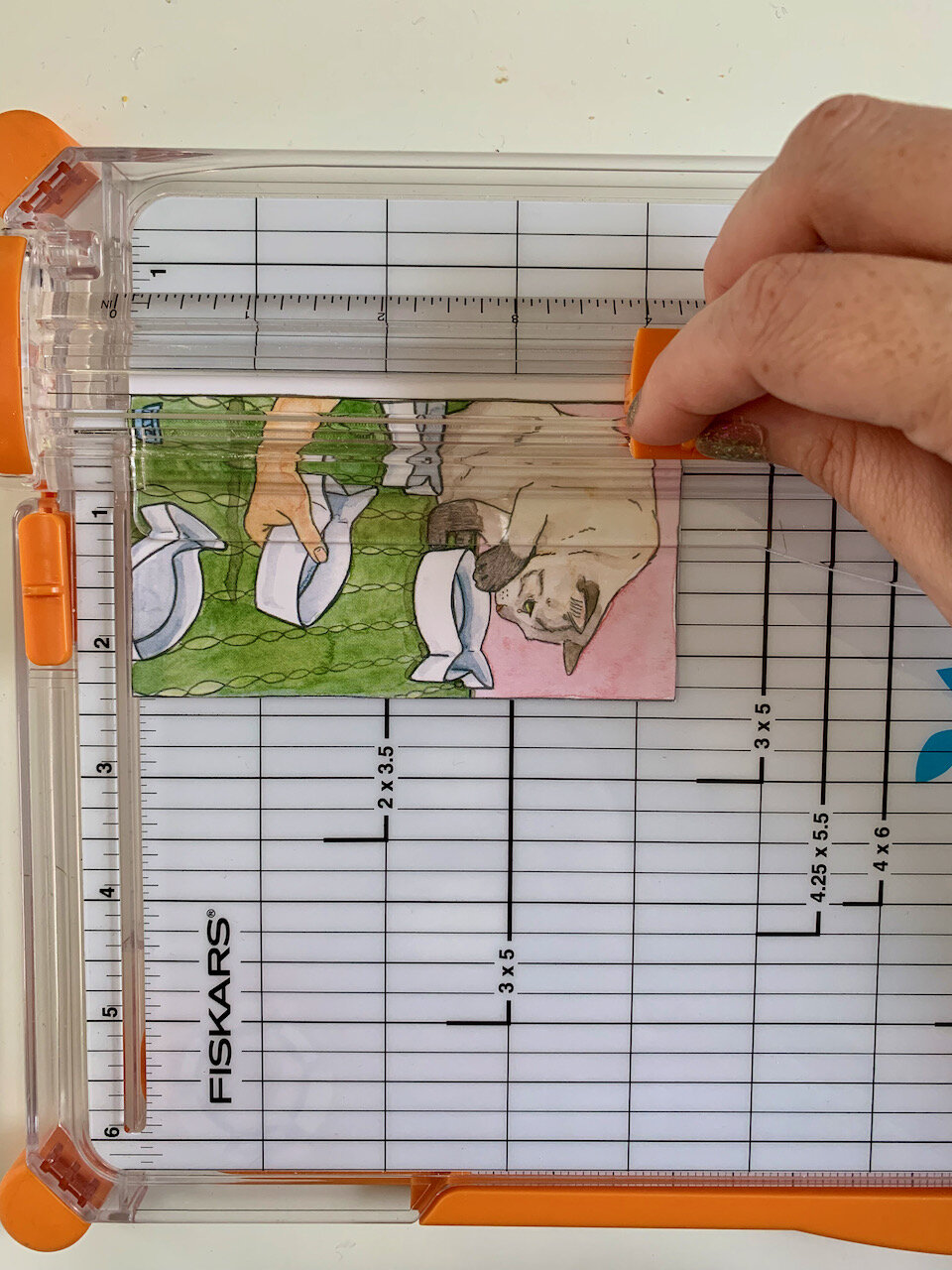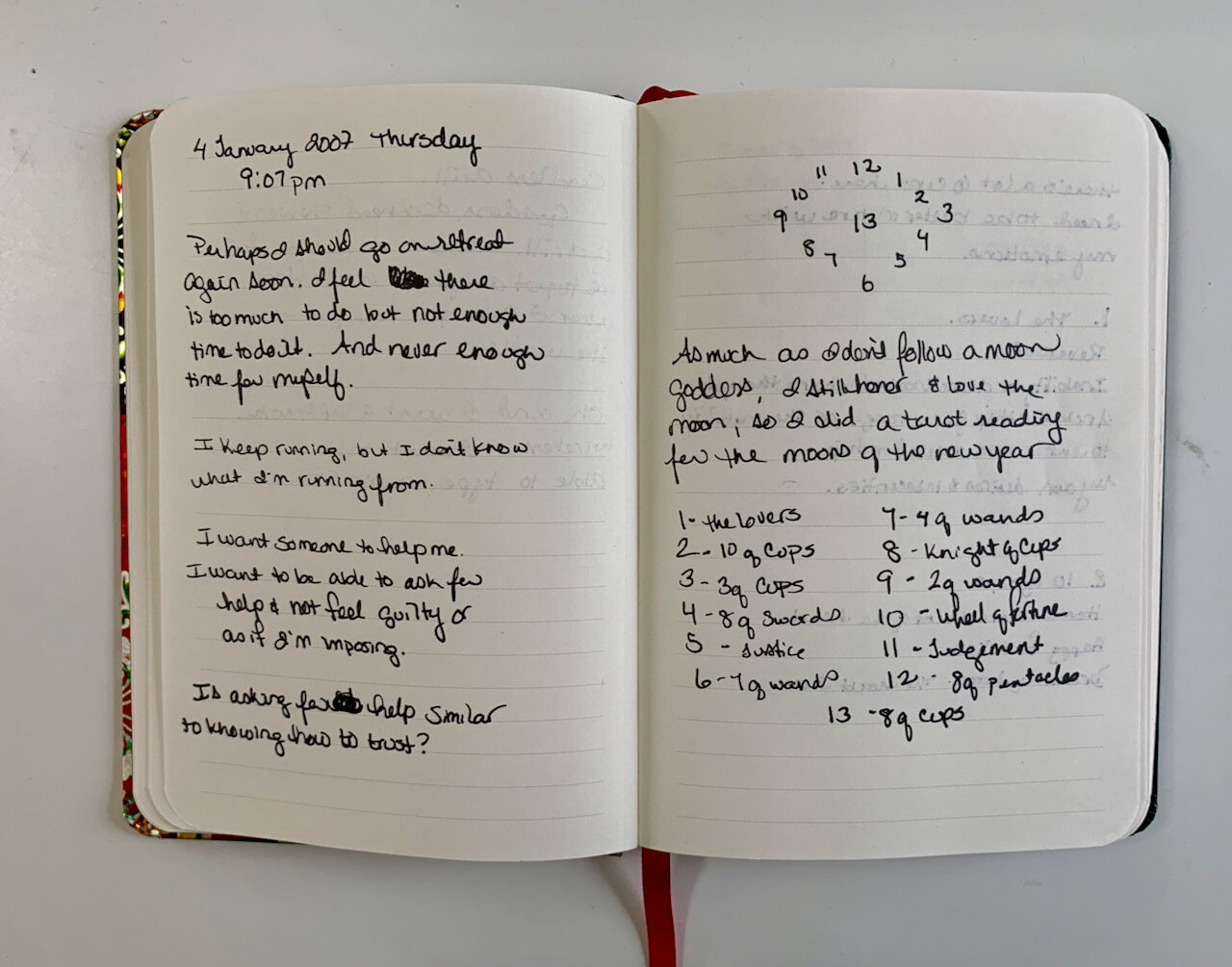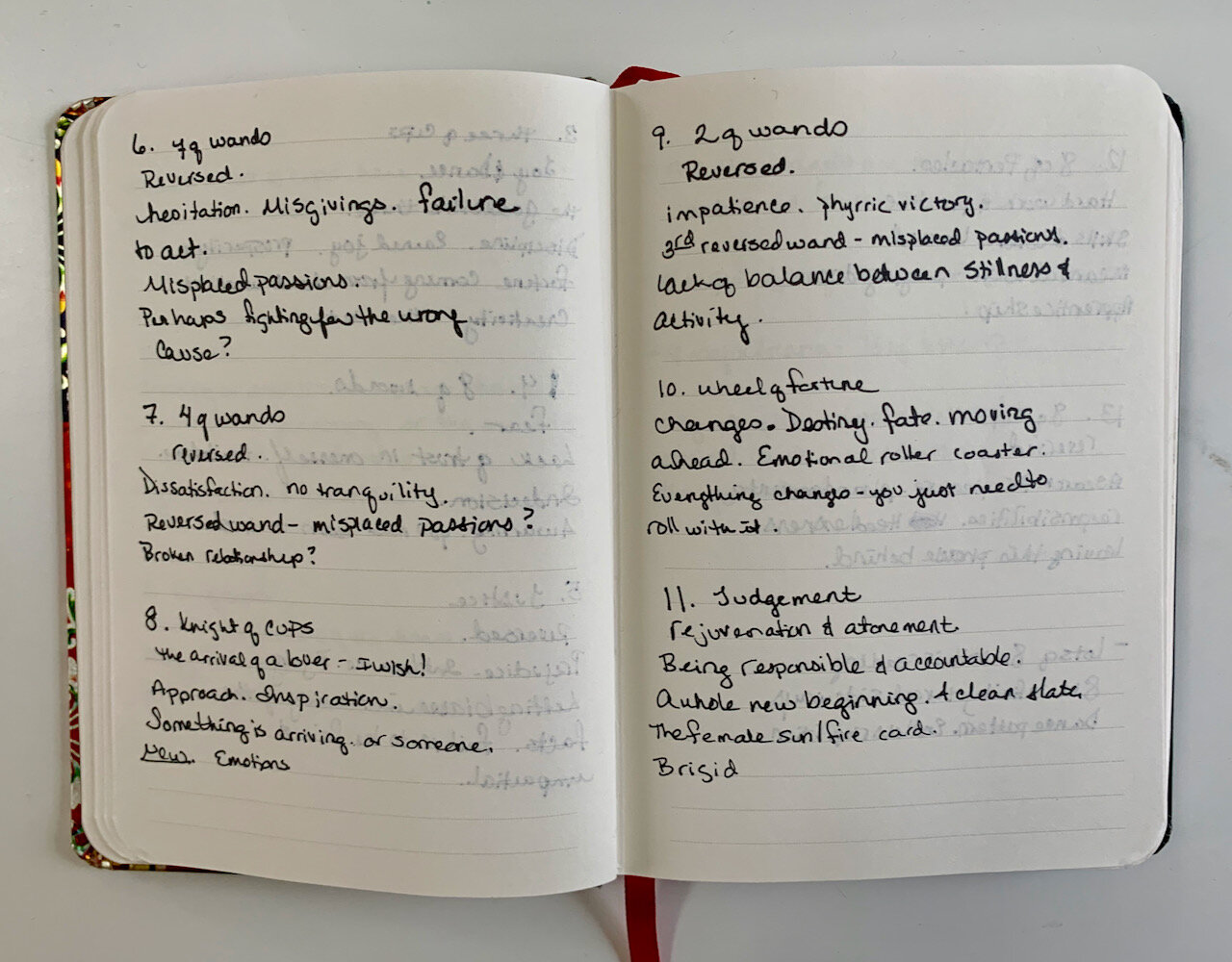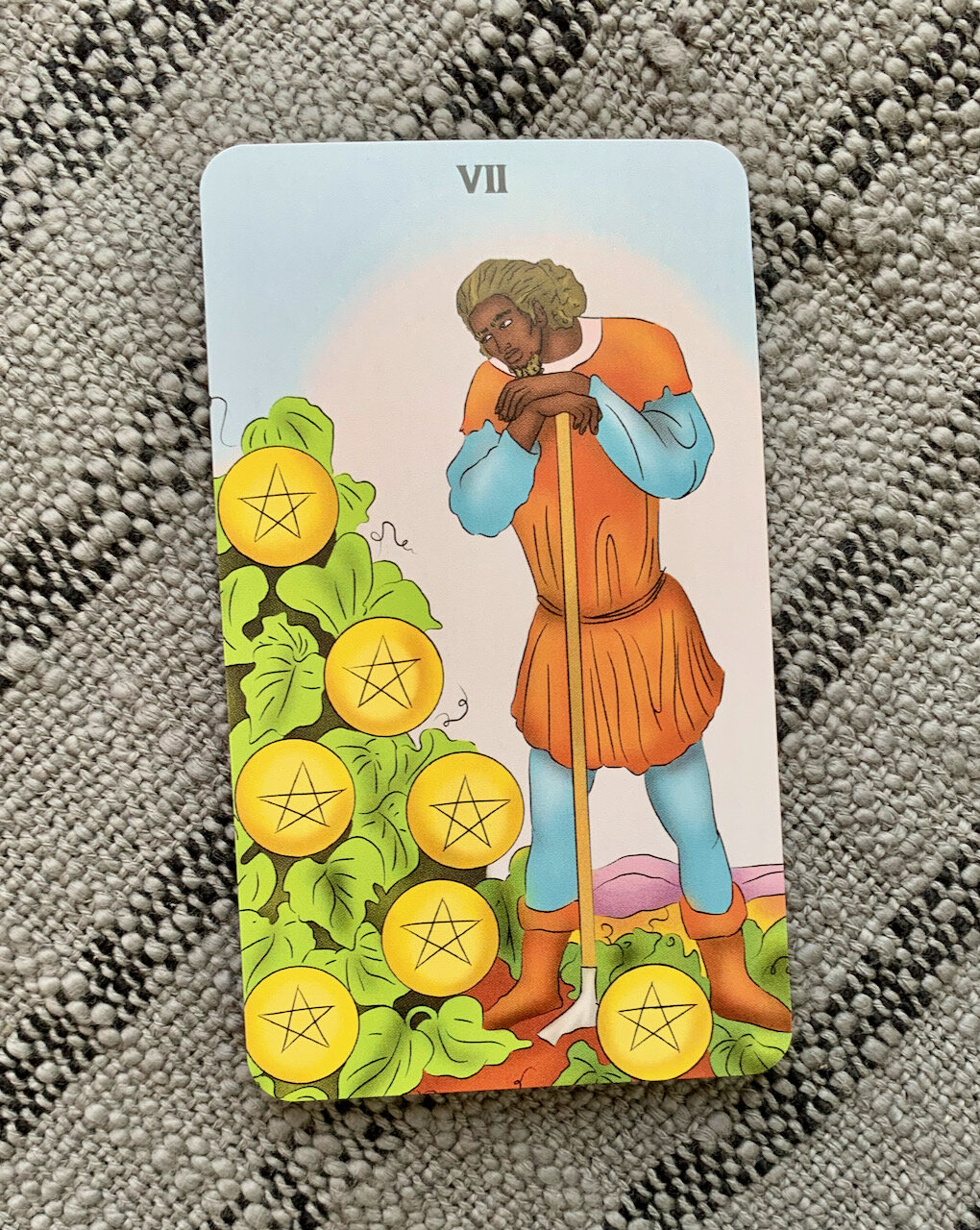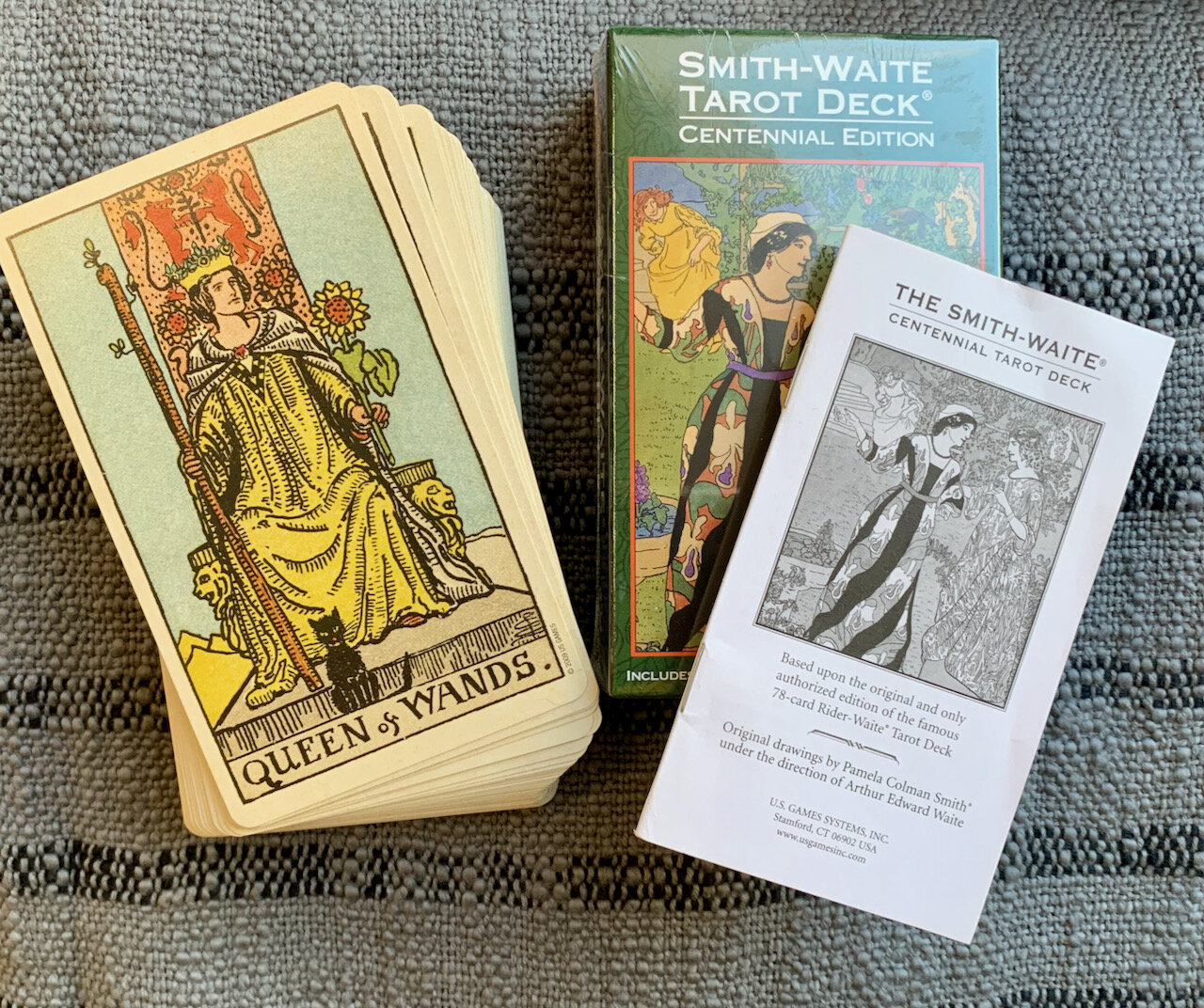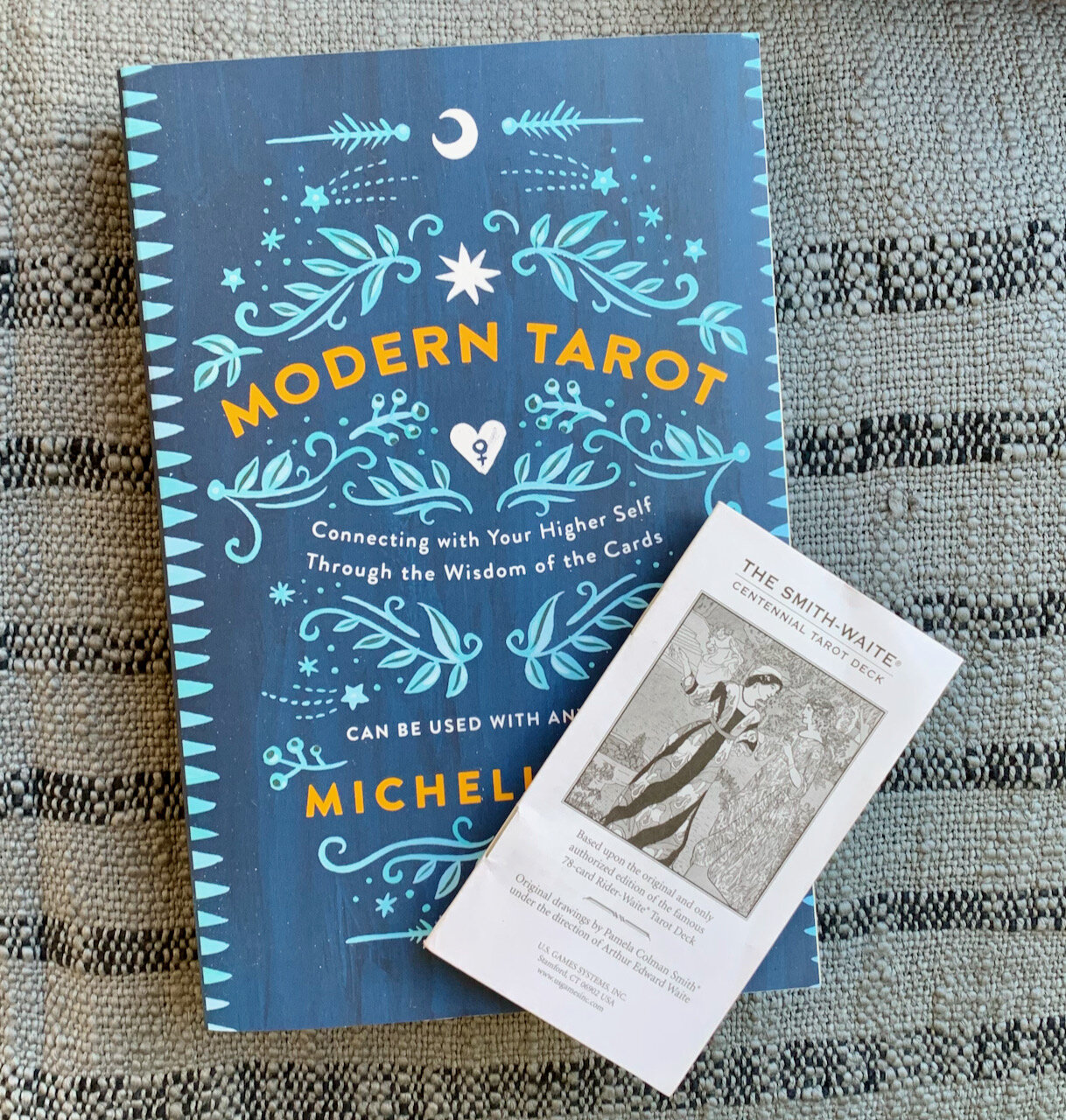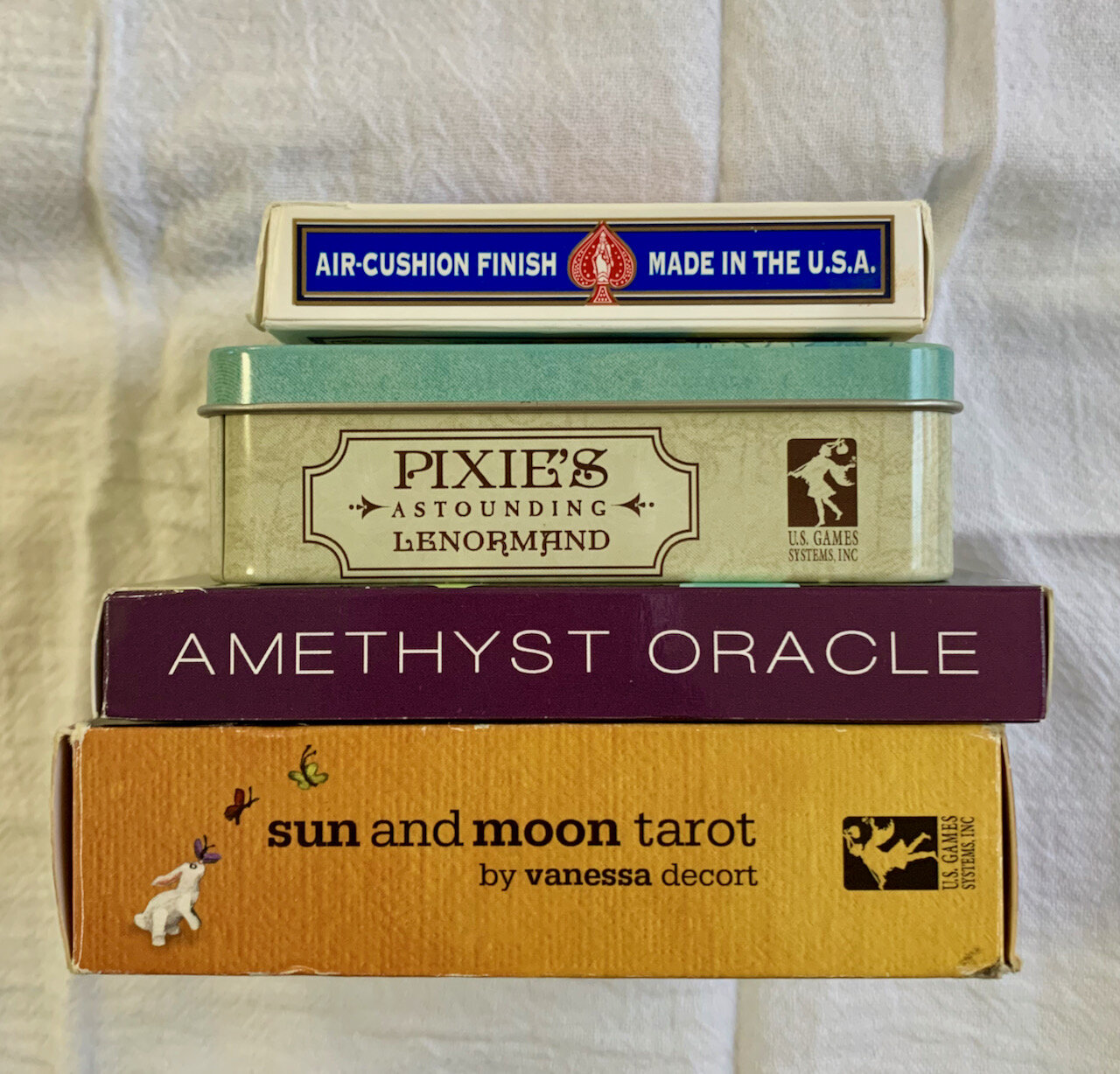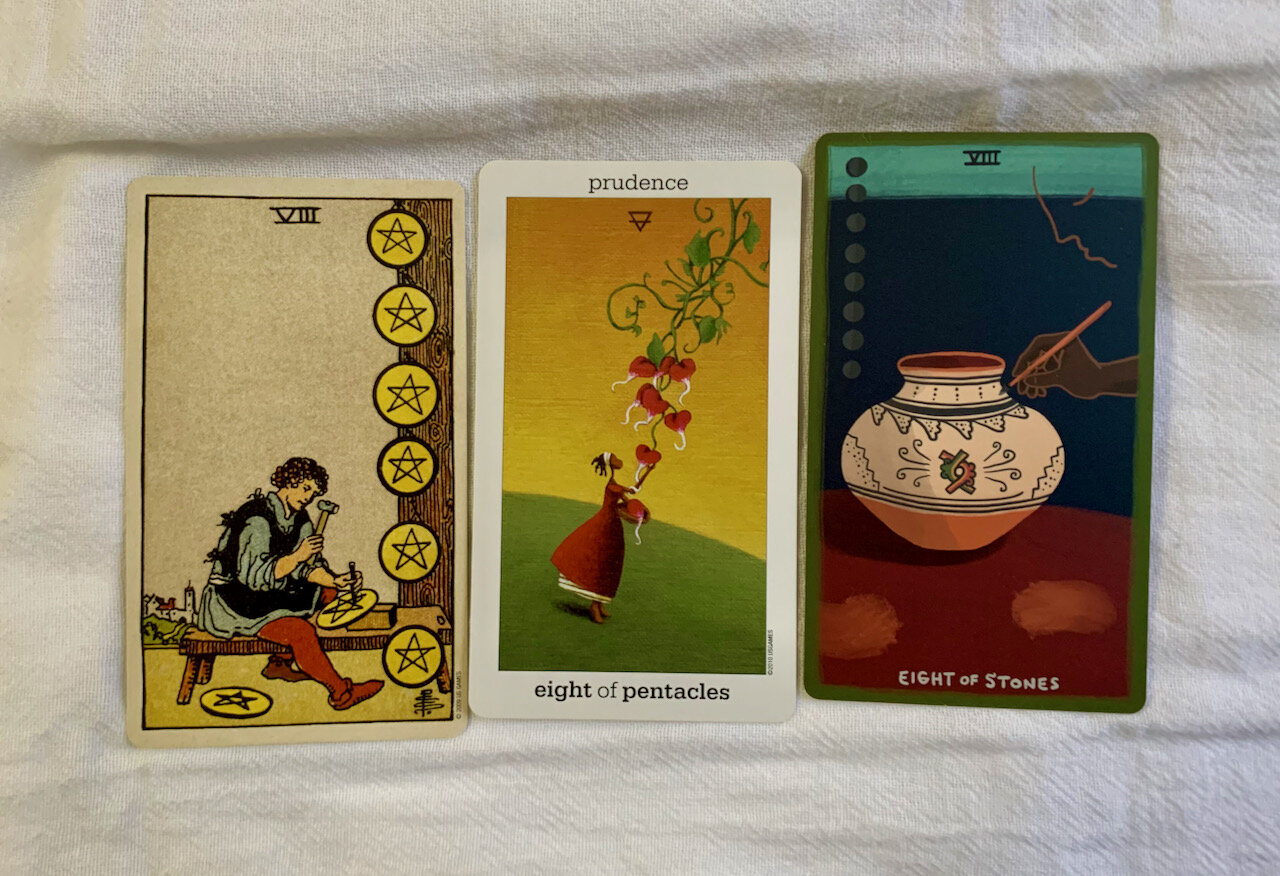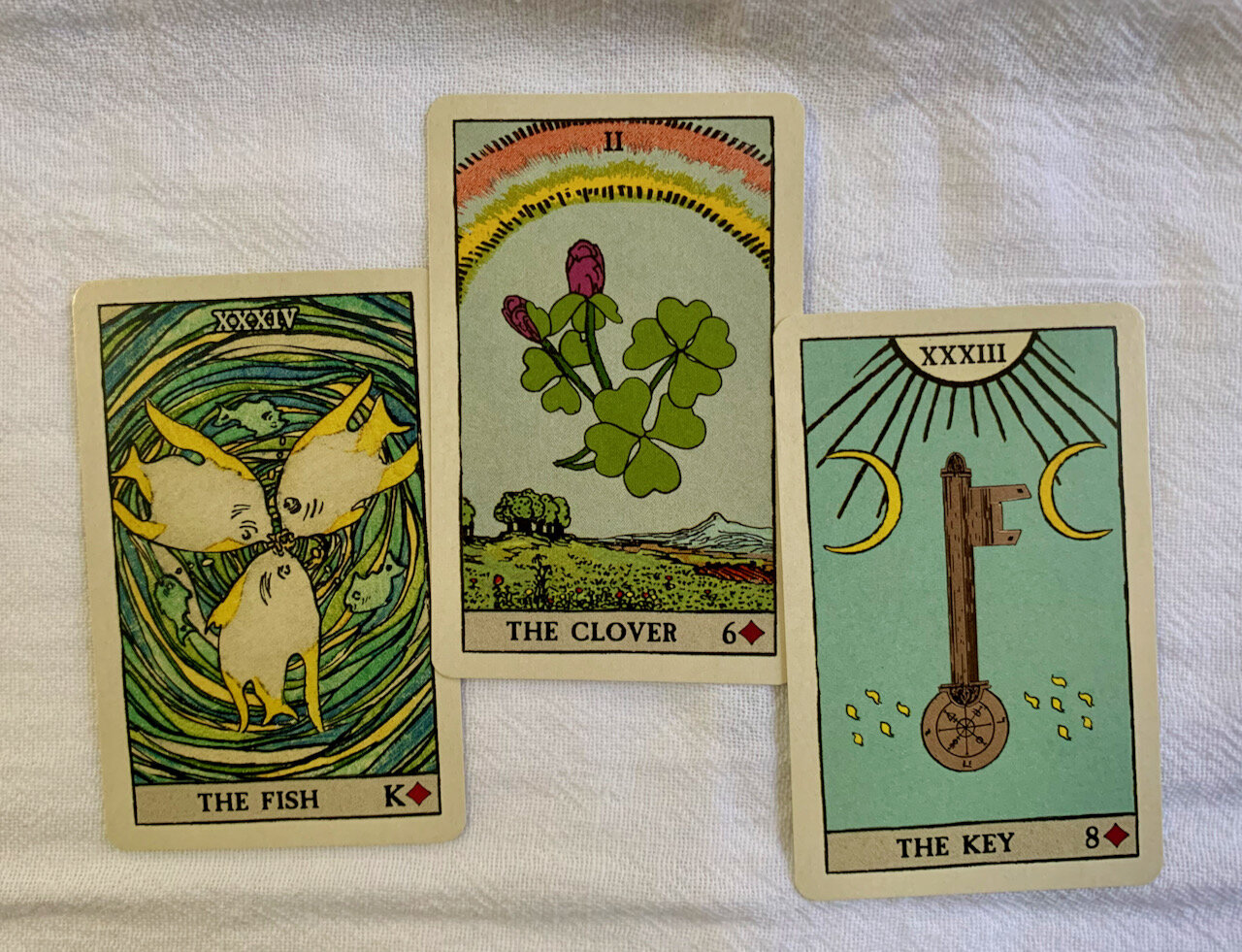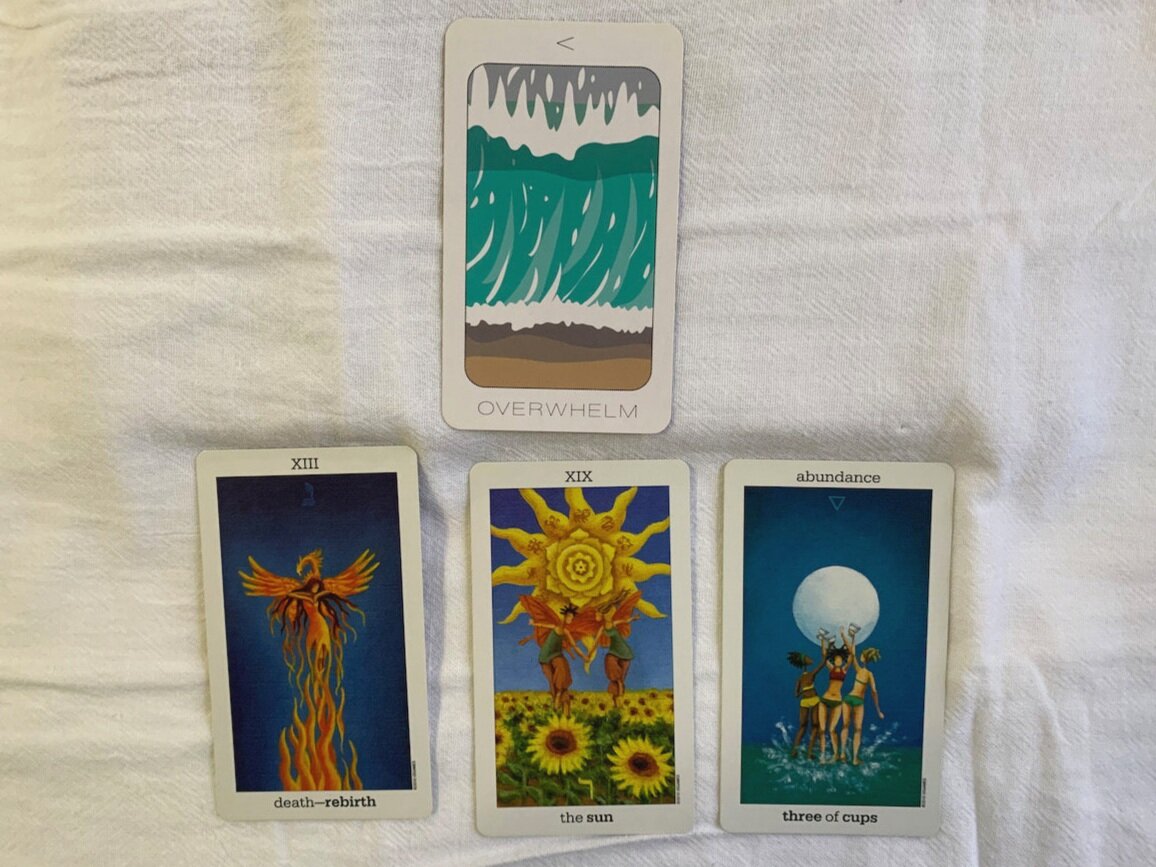Last time I introduced you to the idea of modifying a tarot deck, and showed you three was to trim a deck. This time I’m going to show you how I renamed the court cards in the Wayhome Tarot.
There’s so much I love about the Wayhome Tarot. I love the table setting in the 10 of Pentacles. the circus horses of The Devil, and the heart and brain of the Empress and Emperor. I love that it’s a non-human deck, showing the natural world. This deck made so much sense to me. The creators, Bakara Wintner and Autumn Whitehurst, write that “each image could reasonably be found on a single, winding walk through upstate New York.” I used to live in Western New York, and these images seemed like home.
I bought this deck because I love how the court cards were imagined: human silhouettes containing the essence of the card. I absolutely loved the King of Swords as a modern windmill/wind farm. But I absolutely hated that it was called Father of Swords. I bought the deck anyway, thinking that I could work with Father/Mother/Son/Daughter rather than King/Queen/Knight/Page. I couldn’t. I kept seeing my father’s face whenever I drew a king card. I couldn’t work that way. Court cards are already some of the trickiest cards to interpret, and I couldn’t deal with the associations this naming convention was bringing up. I knew I had to do something about them.
I thought about trimming, but there was no way for me to do it evenly across all the cards. The Majors and Minors had the name of the card written across the bottom, while the court cards had the names on the top. If I couldn’t cut out the names, then I had to cover them. I thought about just writing a new name and sticking it on, but I couldn’t get my handwriting even enough. I asked for advice from Tarot with Scissors, and dredged up my grad school notes on archival preservation materials, and got to work.
I found a close enough font match in Papyrus 12 point. I used Avery 5260 address labels that I had on hand, and printed off a sheet containing the new names.
I trimmed them to size using an X-Acto knife.
I colored them in with an alcohol-based marker (Art Alternatives Illustration Marker in E2 Sand) so that it wasn’t bright stationery white. It isn’t an exact match but it’s consistent across all court cards, so I’m OK with that.
I sealed everything with 2 coats of satin Mod Podge, to prevent the edges of the labels from lifting.
I am so very happy with how this modification turned out. I’m using it for my daily draws this month. Depending on the humidity, the Mod Podge gets a little sticky, but it’s no big deal. I can do an overhand shuffle and a riffle shuffle and the labels aren’t lifting. And while there is a thickness to the court cards that isn’t present in the rest of the deck, I can’t feel it enough to “cheat” in my readings.
This modification, while drastic, has changed the Wayhome tarot from something that I wanted to love but couldn’t, into one of my favorite decks.
